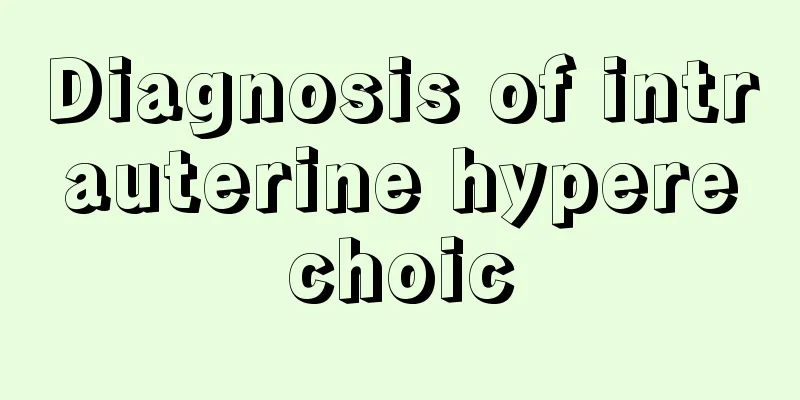What is the best way to treat uterine fibroids?

|
If you suffer from uterine fibroids, then patients need to pay attention to it and understand the correct and effective treatment methods in daily life. Common drug treatments are indispensable. If the condition is serious, surgical treatment should be considered. 1. Follow-up observation If the patient has no obvious symptoms and no signs of malignancy, regular follow-up observation can be performed. 2. Medication (1) Gonadotropin-releasing hormone agonist (GnRH-a) Currently, the commonly used GnRH-a in clinical practice include leuprorelin (Enanton), goserelin (Zoleide), triptorelin (Dapiga), etc. GnRH-a should not be used continuously for a long time. It is only used for pretreatment before surgery, generally for 3 to 6 months, to avoid causing severe menopausal symptoms caused by low estrogen. A small dose of estrogen can also be supplemented at the same time to counteract this side effect. (2) Mifepristone is a progesterone antagonist that has been clinically tried in recent years to treat uterine fibroids. It can reduce the size of fibroids, but the fibroids often grow again after discontinuation of the drug. (3) Danazol: used for preoperative medication or treatment of uterine fibroids that are not suitable for surgery. Uterine fibroids may grow larger after medication is stopped. Danazol can cause liver damage and androgenic side effects (weight gain, acne, dull voice, etc.). 3. Surgery Surgical treatment of uterine fibroids includes myomectomy and hysterectomy, which can be performed abdominally or vaginally, or endoscopically (hysteroscopy or laparoscopy). The choice of surgical procedure and approach depends on factors such as the patient's age, whether or not they have fertility requirements, the size and location of the fibroids, and medical technology conditions. (1) Myomectomy: A surgery to remove uterine fibroids while preserving the uterus. It is mainly used for young women under 40 who wish to retain their fertility. It is suitable for patients with larger fibroids, heavy menstruation, compression symptoms, infertility due to fibroids, submucosal fibroids, and fast-growing fibroids without malignant transformation. (2) Hysterectomy: For patients with obvious symptoms, those with the possibility of malignant transformation of fibroids, and those who have no desire to have children, hysterectomy is recommended. Hysterectomy can be performed with total hysterectomy or subtotal hysterectomy. For older women, total hysterectomy is more appropriate. The possibility of cervical malignancy must be excluded before surgery. 4. Focused Ultrasound Therapy By focusing ultrasound waves and raising the temperature locally inside the tumor to over 65°C, the tumor undergoes coagulative necrosis, which in turn has a therapeutic effect. The treatment can cause the fibroids to shrink and relieve symptoms. Indicated for symptomatic uterine fibroids. The advantages are that there are no surgical scars after treatment and recovery is fast. Adverse reactions have been reported including skin burns, adjacent intestinal damage, and hematuria. |
<<: What is the treatment for adenomyosis?
>>: Is interventional surgery good for uterine fibroids?
Recommend
Can I get pregnant if sperm leaks out after sex?
Many people who are planning to have a baby do no...
What to do if you feel dizzy after giving birth
Women are not in good health after giving birth a...
What to eat in summer to enlarge breasts
The weather is quite hot in summer, so many peopl...
8 snacks women should eat more
If women want to be beautiful, they must first de...
A small abscess grew on the areola
After a pregnant woman gives birth to a baby, it ...
What to do if you have mild uterine prolapse
Very few people don’t know that if a woman gets m...
What dance should girls learn?
There are many dances suitable for girls to learn...
Buttocks pain during late pregnancy
Many pregnant women will experience such a situat...
The remote control key can open the door but cannot start the car. What should I do? Why can't the remote control key open the car door?
There are two types of keys for opening car doors...
What are the benefits of mud moxibustion for women?
Many people may have many doubts about mud moxibu...
How can I speed up labor pains after seeing blood?
If a pregnant woman has spotting in the late stag...
Can mastitis be detected by ultrasound?
If a woman suspects that she has mastitis, she sh...
What is the reason for the dull pain in the lower right side of the female abdomen
On the one hand, being a man is tiring, on the ot...
Detailed process of luteal ovulation in vitro fertilization
With the development of society, IVF technology i...









